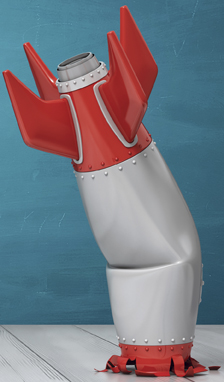SURETY BONDING
Business is great, so how do we get people to join?
By Joseph S. Harrington, CPCU
What’s the best business to be in today? Not many people would answer “surety bonding,” but it definitely deserves a place on the proverbial “short list.”
The devastating losses of the Enron era are an increasingly distant memory for an industry that exceeded $6 billion in direct written premium in 2017—more than double its level from 20 years prior. Today, loss ratios hover at or below 20%; historically, loss ratios in the range of 25% to 30% were considered good.
It comes as no surprise, then, that more than 80% of surety industry respondents to a 2018 “State of the Surety Industry” survey would report profitable growth over the previous year and plans for expansion in the immediate future. The report was released in the summer of 2018 by the National Association of Surety Bond Producers (NASBP).
Later in the year, Willis Towers Watson reported that “the surety industry continues to outperform most other financial service sectors … . Written premium levels have increased for most surety companies year over year, with loss ratios decreasing in most cases.”
“The current market for surety bonds continues to be abundant and prosperous,” says Scott Paice, vice president of surety for FCCI Insurance Group. “The industry has maintained profitability with low losses, increased efficiencies and steady growth.
“State license bonds will always be required, so there will always be demand for this compulsory product.”
—Veronica Rodriguez
Underwriter
Bankers Insurance Service
“There may be pressure on results as an economic slowdown is inevitable and losses start to increase, but we may see another year or two before any slowdown has an impact on our industry,” he adds.
New opportunities
“Maintaining underwriting discipline is of great concern” to surety companies, according to the NASBP, whose survey indicates that “excess capacity [is] a significant challenge” contributing to “deteriorating” and “diluted” terms and conditions for surety bonds.
Nonetheless, Paice and others find many new opportunities in the line. These opportunities arise from a robust construction market fully recovered from the recession of the mid-2000s and the increased use of surety bonds in other sectors.
Perhaps most significant, according to Ross Fisher, senior vice president for specialty commercial insurance at The Hartford, is a “significant increase in the use of surety bonds in private construction.” Fisher also is chairman of the Surety & Fidelity Association of America (SFAA),
Former SFAA President Lynn Schubert (who retired December 31, 2018, and today carries the title of “president emeritus”) adds that private project owners increasingly recognize what government entities have long been obligated to do: “Requiring surety bonds in private construction protects companies and shareholders from the enormous costs of contractor failure.”
As for commercial surety business, state requirements sustain consistent demand for surety bonds on licensed occupations, according to Veronica Rodriguez, underwriter for Bankers Insurance Service, an Aon Affinity business.
“State license bonds will always be required, so there will always be demand for this compulsory product,” she says. “The key to writing profitable business is to follow underwriting guidelines carefully to select the appropriate risks to write and let the others go.”
Rodriguez finds recent mergers and acquisitions among mortgage lenders to be a challenge. “This M&A activity forces us to concentrate heavily on organic growth,” she says. “It is important for principals (insureds) to be flexible and work closely with a trusted advisor.”
 Non-traditional
Non-traditional
There is also growing recognition of the value of performance bonds other than those traditionally written for the construction and commercial sectors. These relatively new types of bonds are sometimes referred to as “service and supply bonds.”
In 2004, the SFAA introduced a new class code for “non-construction contract performance bonds” in its statistical plan. Since then, direct written premium for that class has grown from $15 million in 2005 to $105 million in 2015, the latest year for which statistics are publicly available.
The 2015 figure is only a small fraction of overall surety premium, but an indication of impressive growth nonetheless. Moreover, the reported figures may understate the size of the non-construction surety market, as industry observers suspect some non-construction premium is still reported with construction surety premium.
Also, for both construction and non-construction commercial sureties, Willis Towers Watson and others report that surety companies and brokers are promoting surety bonds as an option to replace letters of credit.
In light of all that, “surety bond producers should not have any issue finding a home for their accounts in this competitive market,” Paice says. “If you cannot find a home for an account in this market, the account probably has some very serious issues.”
Talent war
One “very serious issue” shared by the surety business and its construction clients is a shortage of skilled young people prepared to enter the business. Rather ominously, the NASBP survey states that “nearly all respondents indicated that they had plans to hire talent away from competitors.”
Paice is among those on the front line of the war for talent. “Recruiting and training is a significant challenge facing surety carriers and producers today,” he says. “The number of retirements expected over the next five years is staggering.
“Although many of the larger carriers and agencies have made progress in their recruiting and training efforts,” he adds, “it will be difficult to replace the experience and the long-term relationships that have been established over many years.
“A proactive recruiting and training mindset will be key to maintaining business relationships,” Paice notes.
To that end, FCCI has established an internship program and partnerships with several colleges and universities to develop young talent for the surety business.
Construction contractors face a similar problem, only more immediate, as many experienced building tradesmen who were let go during the recession never returned.
“One of the biggest challenges contractors face is to find good young workers, as fewer Millennials are going into the construction trades,” says Rodriguez. Willis Towers Watson concurs, noting that “labor shortages are reaching critical levels, resulting in project delays, schedule slides and rising labor costs.”
“The construction labor crunch may have a direct impact on surety companies,” Paice says. “The shortage of skilled labor could lead to performance issues and higher claims costs as well,” he says.
Contract risk
Relative inexperience among surety and construction personnel does not bode well for another challenge facing both industries: increasingly onerous contract terms and conditions being imposed on contractors and subcontractors by project owners.
Some 87% of the surety professionals responding to the NASBP survey indicated that “managing contractual risks” was among their top concerns, and 73% indicated that “difficult owner contract language” extending project risks to contractors was a top issue for their construction clients.
“Onerous terms and conditions are increasingly being extended down to the subcontractor level,” says Paice. “It is imperative that our customers realize the risks associated with this. Contractors are generally good at their trade, but they are not [trained] to [detect] legal ramifications arising from circumstances beyond their control.”
Looking forward, Paice is carefully watching for the potential impact of rising interest rates on the construction and surety markets.
“A tightening credit market may pose the biggest risk to the construction and surety markets,” he says. “Low interest rates and readily available credit helped perpetuate the good times, but increased rates could disrupt current trends and accelerate a downturn.
“This could have a two-fold effect on the [surety] industry,” he adds. “It could negatively affect the amount of private construction, thus decreasing premium revenue, and it could severely disrupt cash flows, potentially leading to more claims for payment.”
Through good times and bad, the fundamentals of sound surety underwriting remain constant.
“As a producer, we remain competitive by partnering with multiple carriers for competitive rates and by being aggressive on the right risks,” says Rodriguez. “We maintain a strong working relationship with our carrier partners to better service the principal’s needs.”
For more information:
Bankers Insurance Service
www.bankersinsuranceservice.com
FCCI Insurance Group
www.fcci-group.com
Surety & Fidelity Association of America
www.surety.org
The Hartford
www.thehartford.com
The author
Joseph S. Harrington, CPCU, is an independent business writer specializing in property and casualty insurance coverages and operations. For 21 years, Joe was the communications director for the American Association of Insurance Services (AAIS), a P-C advisory organization. Prior to that, Joe worked in journalism and as a reporter and editor in financial services.





